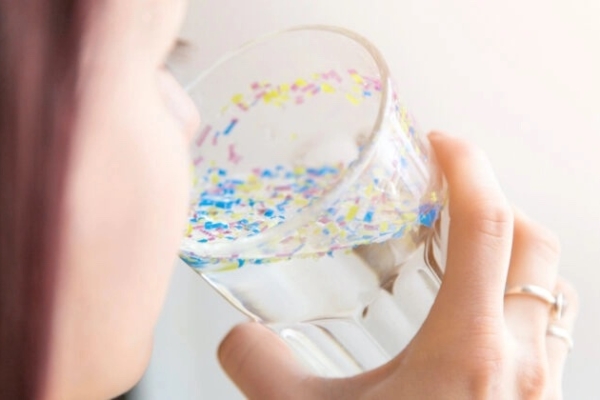A new study suggests that when people tear open the plastic wraps on meats or pre-packaged fruits and vegetables purchased at grocery stores, it may lead to contamination of the food by microplastics and nanoplastics.
Microplastics are polymer fragments ranging in size from less than 0.2 inches (5 millimeters) to 1/25,000 inch (1 micron). Any particles smaller than this fall into the nanoplastic category, measured in billionths of a meter.
Experts point out that nanoplastics, with a diameter only one-thousandth the width of a human hair on average, are extremely tiny and can potentially enter the bloodstream through the digestive tract or lung tissues. As these plastics circulate in the bloodstream, they could disperse potentially harmful synthetic chemicals throughout the body and cells.
Recent studies have found the presence of microplastics and nanoplastics in human brain tissues, blood, lung and liver tissues, urine and feces, breast milk, and even placenta.
When unpacking deli meats and cheese, steeping tea bags in hot water, or opening milk or juice cartons, microplastic contamination could occur, according to CNN reports. It is also possible for glass bottles and jars with plastic-coated metal caps to shed tiny plastic particles.
The study’s lead author Lisa Zimmermann stated that the repetitive opening and closing of glass and plastic bottle caps causes the release of significant amounts of microplastics and nanoplastics into beverages. This study was published on June 24 in the “NPJ Science of Food” journal.
“The study shows that with each bottle opening, the amount of microplastics increases. Therefore, it is the interaction with items in contact with food that leads to the release of microplastics and nanoplastics,” Zimmermann said. She is also the scientific communication officer at the Food Packaging Forum, a nonprofit foundation based in Zurich, Switzerland dedicated to researching chemical substances in food contact materials.
According to this study, researchers measured the presence of microplastics and nanoplastics in products such as beer, canned fish, rice, mineral water, tea bags, salt, take-out food, and soft drinks.
“This is the first systematic evidence demonstrating how plastic-packaged foods, under normal and expected usage scenarios, are contaminated with microplastics and nanoplastics,” Zimmermann said. “We found that food packaging is actually the direct source of microplastics and nanoplastics in food.”
Another survey released by the Food Packaging Forum in September 2024 showed that over 3600 chemical substances can migrate into consumer goods during food manufacturing, processing, packaging, and storage, eventually entering the human body.
The September 2024 research revealed that 79 known food processing chemicals can lead to cancer, genetic mutations, endocrine and reproductive problems, and other health issues.
David Andrews, Acting Chief Scientist for the Environmental Working Group in Washington D.C., expressed concerns in an email to CNN, mentioning that while scientists have long known about the potential for toxic chemicals from plastics to seep into food, the significance of food packaging as a source of plastic particle exposure and its implications for health remain worrisome.
“This new study emphasizes that food packaging and processing equipment are potential significant sources of microplastic contamination in the food we consume and eventually enter our bodies,” Andrews stated.
Although he was not involved in the study, Andrews stressed, “This research should raise concerns.”

